
Electric cooperatives around the country are focused on providing members with affordable and reliable energy to power your life and our community. As our nation increasingly depends on electricity to power the economy, FreeState is working to anticipate, plan and respond to market trends and policy shifts.
As a trusted local energy provider, electric co-ops are best suited to advise and help our member owners, local businesses, and government agencies plan as electric vehicles become more commonplace.
FreeState must plan now to have the necessary electric infrastructure to meet future EV charging demands without jeopardizing the ability to provide you with affordable and reliable electricity. Why is it important to plan? Because right-sizing local EV charging infrastructure is critically important. This long-term investment requires ample time, technology, and resources. Unless we lay some of the necessary groundwork today, we could struggle to keep up with rising electric demand in the future. That’s not an acceptable path forward for FreeState or our members.
Most automakers have decided to transition many or all their new vehicles to electric-only by 2030. Coupled with state policies and growing EV adoption across the nation, these market forces will directly impact how the electric grid functions in the future.
EV FAQ
As a trusted energy advisor focused on people, not profits, FreeState offers candid assessments of charging requirements for personal, commercial, municipal, or fleet EVs.
Consumer interest in EVs is growing, and FreeState provides information about EVs so our members can make informed EV purchasing decisions. Many automakers have decided to transition many or all of their new vehicles to electric-only in the next 10 years. FreeState, like other electric providers, must plan now to have the necessary electric infrastructure to meet future EV charging demands without jeopardizing the ability to keep affordable and reliable energy for your home and local businesses.
Distributing power to our members is our job. We need to have enough power to supply every member with what they need — no matter how much they use.
Demand matters because significant increases can put pressure on the power grid. If demand exceeds the capability to supply it, the price can go up. That matters because power is the co-op’s greatest expense. Two-thirds of our monthly expenses go directly to power costs. We talk about ways members can beat the peak, but there are other things you can do to help the cooperative. One of the biggest things you can do is tell us if you add significant power-pulling items at home.
For example, if you purchase a new electric vehicle (EV) — then communicating it to us is important, and not just for your service — but for your neighbor’s service, too. If the co-op knows you need that extra demand, we can plan for it, and that not only helps with cost management but also reliability.
Our engineering and operations staff can look at the infrastructure already present and whether adjustments need to be made to keep everyone’s lights on.
Learn more about the added demand of EVs and the impact to your monthly bill.
Co-ops have always been champions for their community. As a trusted local energy advisor and provider, FreeState is best suited to advise and help our members, local businesses, and government agencies plan for expanding electric transportation.
Right-sizing local EV charging infrastructure for cars, trucks, and fleet transportation is critically important. This long-term investment requires ample time, technology, and resources.
Unless we lay some of the necessary groundwork today, we could struggle to keep up with rising electricity demand in the future. That’s not an acceptable path forward for our community or us.
There are various electric vehicle types available; these are the three most common types:
Battery Electric Vehicles have a battery and an electric motor instead of a gas tank and an internal combustion engine. Sometimes EVs are also referred to as "All-Electric Vehicles" or "Plug-in Vehicles" (not to be confused with Plug-in Hybrid Electric Vehicles). They run entirely on electricity and do not produce any exhaust from fuel burning. It is important to note that a portion of the electricity supplied to your home may be generated from fossil fuels such as coal and natural gas.
Plug-in Hybrid Electric Vehicles have an electric motor AND a gas-powered internal combustion engine. Some PHEVs operate exclusively, or almost exclusively, on electricity until the battery is nearly depleted, then the gasoline-powered engine turns on to provide power. Like Battery Electric Vehicles, PHEV can be plugged in to charge the battery when the vehicle is not in use.
Hybrid Electric Vehicles have an electric motor AND a gas-powered internal combustion engine and don't charge. HEV can have a substantial range on a single tank, but they still burn fossil fuel, produce carbon emissions, and require trips to the gas station and scheduled engine maintenance. HEV may be ideal for those with extended commutes and limited charging system access.
Is your daily commute less than 330 miles? Today’s electric vehicles have a driving range per charge between 50 to 330 miles. If your daily commute is under 250 miles per day, there is likely an affordable EV model that will fit your needs.
BUYER TIP: When you're looking at EVs, check the "range-per-charge" for the vehicle. This is the number of miles the car can typically drive between full charges. For example, if the range per charge for an EV is 100 miles and your daily commute is 30 miles, you should be able to go about 3 days between charges (30mi + 30mi + 30mi = 90mi).
Range refers to the number of miles an EV will travel before the battery needs to be recharged. Electric cars typically have a shorter maximum range on a charge than fossil-fueled cars can travel on a full tank of gasoline. However, EVs can be charged at home - no gas station required - and the overall operation cost is typically substantially less than a gasoline-powered vehicle.
EV range varies significantly between models.
All-Electric Vehicles require less maintenance than conventional vehicles because there are fewer fluids (like oil and transmission fluid) to change and far fewer moving parts. EVs require minimal scheduled maintenance to their electrical systems, including the battery, electrical motor, and associated electronics. Because of regenerative braking, brake systems on EVs typically last longer than on conventional vehicles.
No Oil Changes: EVs do not require engine oil. There are no oil changes (normally required every 3,000 to 7,000 miles, requirements vary by automobile manufacturer).
No Spark Plugs and Wires: EVs do not require spark plugs and wires. No replacement (estimated replacement at 100,000 miles on gas engine).
No Exhaust System: EVs do not have mufflers or catalytic converters, two components of your exhaust system that can fail and result in expensive replacements.
No Emissions Testing: EVs do not burn fossil fuels and do not have a tailpipe. They do not emit byproducts that need to be tested. States typically grant EVs an emissions exemption.
The average U.S. household spends nearly one-fifth of its total family expenditures on transportation. Saving on fuel can make a big difference in the average family's budget. Electricity is less expensive than gasoline, and EVs are more efficient than gasoline vehicles. Electricity prices are also generally much more stable than gasoline prices. On a national average, it costs less than half as much to travel the same distance in an EV as a conventional vehicle, but your savings could be far more substantial if your current gas-powered vehicle gets poor mileage.
Charging your EV requires plugging into a charger connected to the electric grid, also called electric vehicle supply equipment (EVSE). There are three major categories of chargers, based on the amount of power the charger can provide:
AC Level 1
It provides charging through a 120 V AC plug and does not require the installation of additional charging equipment. Level 1 can typically deliver 2 to 5 miles of range per hour of charging. Level 1 is most often used in home applications but is sometimes used at workplaces. A full charge may take up to 24 hours with level 1 120 V charging.
AC Level 2
Provides charging through a 240 V plug and requires the installation of additional charging equipment by a licensed electrician/installer. Level 2 chargers typically deliver 10 to 60 miles of range per hour of charging. Level 2 is used in homes, workplaces, and for some public charging.
DC Fast-Charge
Provides charging through 480 V AC input and requires specialized, high-powered charging equipment and special equipment in the vehicle itself. DC Fast-Charging can deliver an 80% battery charge or 60 to 100 miles of range for most EV models in about 20-30 minutes of charging. This is the format used most often in public charging stations, especially along heavy traffic corridors. Plug-in hybrid electric vehicles typically do not have fast charging capabilities.
Depending on how far you drive each day, you may be able to meet your driving needs with basic level 1 charging at home. You may want to install a 240 V level 2 charging system to reduce charging time. This may also provide you with additional functionality (like cost estimation or remote on/off) and allow you to participate in future utility programs designed to reward people for charging at specific times, like after midnight, when area power demand is low. Studies have demonstrated that level 2 charging systems provide slight energy efficiency benefits over level 1 chargers – savings estimates vary based on length of charge time.
Regardless of the type of car you drive, the electrification of the transportation sector is underway. FreeState is focused on providing electricity to homes and businesses at a cost local folks can afford. As our nation increasingly depends on electricity to power the economy, we are working to anticipate, plan and respond to market trends and policy shifts.
Like other electric utilities, FreeState must plan now to have the necessary electric infrastructure to meet future EV charging demands without jeopardizing the ability to keep affordable and reliable energy for local homes and businesses.

EV Basics
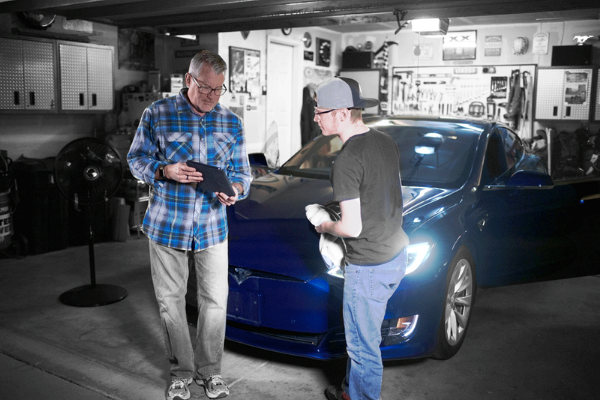
The Future is Electric
Electric vehicles have come a long way since they re-entered the market in 2010.
Now, all major car manufacturers are showing support for electric vehicles by developing new models with longer ranges and more affordable prices. Research shows that by 2040, electric vehicles will account for about 50 percent of new car sales globally.
Over the next few years, electric vehicle growth is expected to continue to rise across the U.S. There are also plans to install thousands of additional charging stations across the country. With the infrastructure in place, people will soon be able to drive electric from coast to coast with plenty of options to plug in along the way.

EV Charging
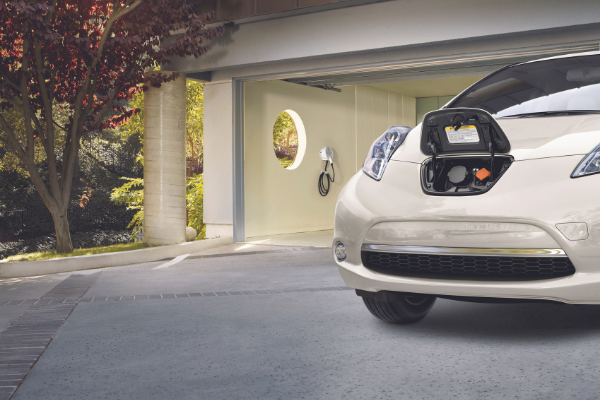
Charging At Home
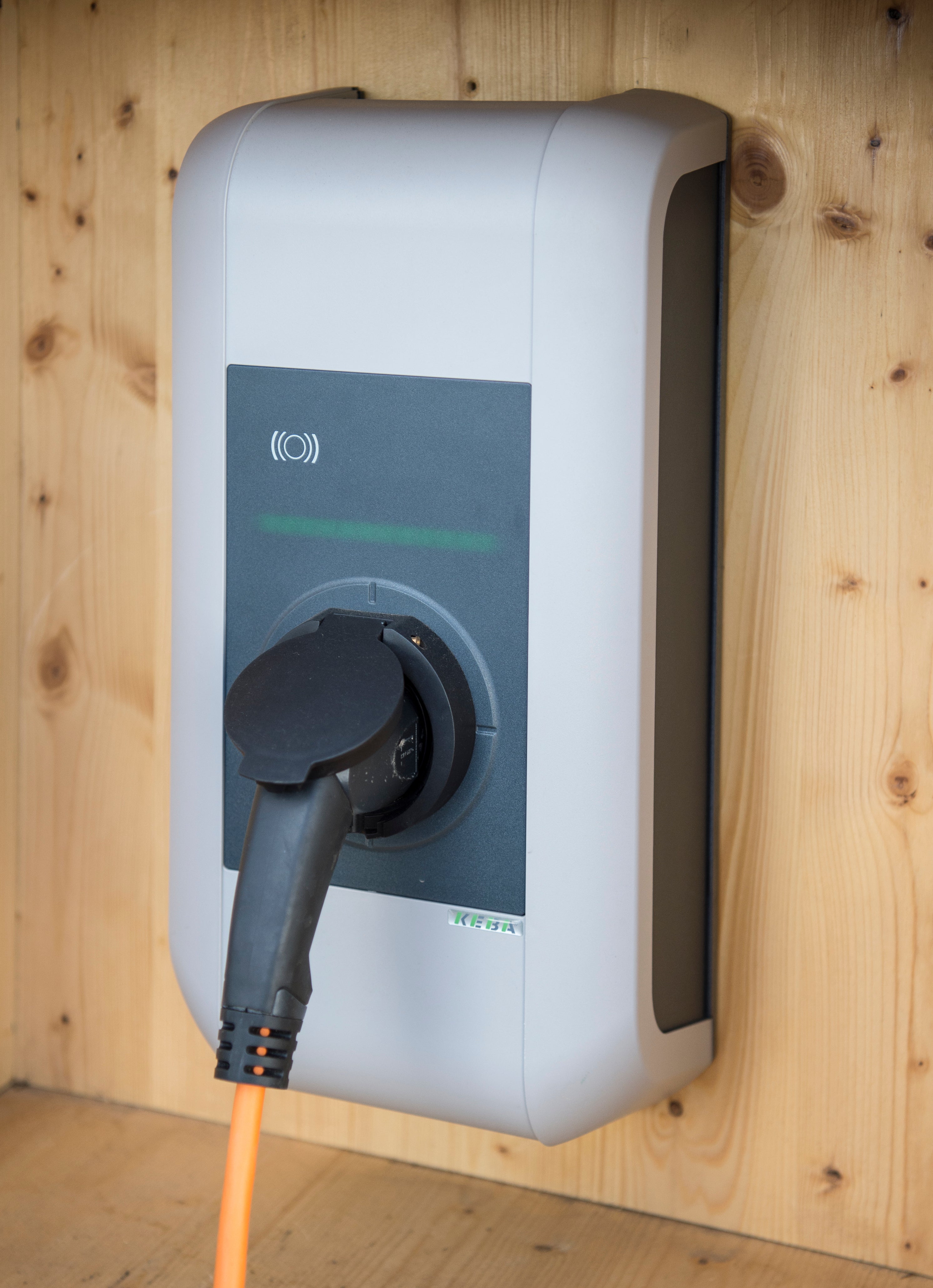 More information about new models of electric vehicles with longer ranges and better prices is becoming more available. It does make one wonder, is it worth making the switch from gasoline to electric? And how would I charge the battery at home?
More information about new models of electric vehicles with longer ranges and better prices is becoming more available. It does make one wonder, is it worth making the switch from gasoline to electric? And how would I charge the battery at home?
Electric vehicles (EVs) are getting more attention these days. Electricity as a vehicle fuel is typically one-half to one-third the cost of gas or diesel, and EV batteries now enable longer ranges. The upfront price of an EV is still higher than its gas-powered cousin, but the cost is coming down.
The Chevy Bolt, for example, has a range of up to 238 miles on a full charge and costs about $36,000 before incentives. The number of models is also increasing, and we could even have an electric pickup truck option in the near future.
It’s important to note you may have to pay upfront costs to charge your EV at home, but it depends on which charging option you select. Let’s take a look at the important steps.
Step 1: Choose your EV.
There are two basic types of EVs: the all-electric vehicle, which is commonly referred to as an AEV or EV, and the plug-in hybrid electric vehicle, also known as the PHEV, which can run using an electric motor or a gas engine. Unlike the gas/electric hybrid that started with the Toyota Prius in 2000, where the battery assists the gasoline engine, yet the car is fueled solely by gasoline, the PHEV features a larger battery that fuels an electric motor, which can power the car independently. A PHEV can run solely on electricity for about 15 to 50 miles depending on the model. This electric-only range may be sufficient for running errands or for those with a shorter daily commute.
Step 2: Select your charging level.
There are two levels of charging to consider for your home. A Level 1 charging unit is the most basic. It’s usually included with the vehicle and plugs into a typical 120-volt outlet, so it is the easiest and cheapest charging solution.
A Level 2 charging unit is more powerful and needs to be purchased separately. It plugs into a 240-volt outlet, the type used for larger appliances (like a clothes dryer), which most of us don’t have in our garages or outside our homes, so there’s an additional cost to have the outlet installed.
Step 3: Know your needs.
Most EVs travel 3 to 4 miles per kilowatt-hour (kWh). Level 1 charging units distribute charge to the battery at 1 to 2 kWh, giving the battery roughly 3 to 8 miles range per hour of charging. So, if you drive your car 40 miles or less during the day and can charge it for 10 hours a night, this will probably be adequate. Level 1 charging makes the most sense for PHEVs and early EVs with smaller batteries and shorter ranges.
Level 2 units typically supply power levels from 6 to 12 kWh, depending on the amperage of the circuit and the power level the EV can accept. This means the Level 2 chargers will provide between 18 and 48 miles of range per hour of charging.
Step 4: Count the costs.
A Level 1 charging unit comes with the car and will meet the needs of most PHEVs and early-model, short-range EVs. A Level 2 charging unit can cost $500 to $700, with installation between $500 and $2,700 depending on how far your electrical panel is from where you will be charging the EV.
Now that you know the basic options, you should talk to your electric co-op before making your EV charging decision. Many electric co-ops offer special incentives for members installing Level 2 chargers or members willing to schedule EV charging during non-peak energy hours. Give them a call to learn more!
EV Economics
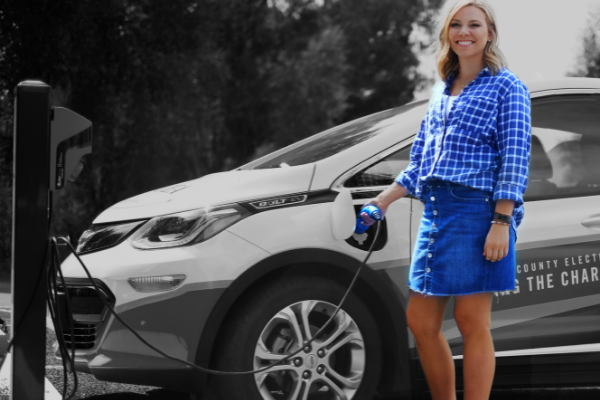
Does Electric Make Sense?
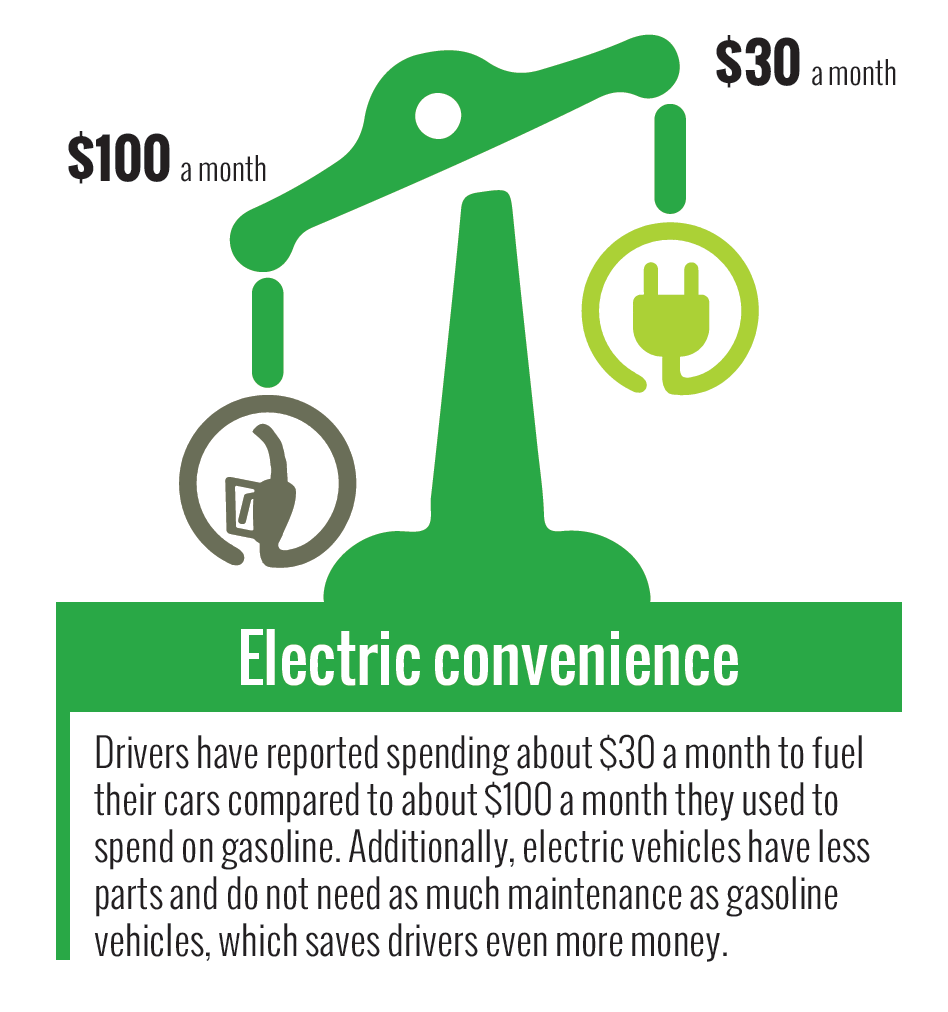 The economics of electric vehicles are affected by geography, climate and how your electricity is generated. Should your next car be an electric vehicle? The answer could depend on where you live.
The economics of electric vehicles are affected by geography, climate and how your electricity is generated. Should your next car be an electric vehicle? The answer could depend on where you live.
Electric vehicles account for just 1.2 percent of the U.S. vehicle market, but sales are booming, growing 25 percent last year. And they’re getting better and cheaper as researchers improve the batteries that power them. Here’s a guide to help you decide if an electric car is for you—or if you just want to be smarter about one of the next big things in energy.
The first thing to realize about electric cars is they can drive more than enough miles for you on a single charge, even if you live out in the wide-open countryside.
Location issue #1: the distance myth
Try keeping track of your actual daily use, advises Brian Sloboda, a program and product manager at the National Rural Electric Cooperative Association.
“If you’re an insurance salesman, you’re logging a lot of miles, so an electric car’s not going to be for you,” he says, noting that a typical range for an electric car today is over 100 miles, and ranges of 150 to 250 miles are becoming common. “But if you look at how many miles you drive in a day, for most people in the United States, even in rural areas, that number is under 40 miles per day. So if your car has a range of 120 miles, that’s a lot of wiggle room.”
According to the Federal Highway Administration, the average American drives 25 miles a day, and for rural areas, that average is 34 miles a day.
Sloboda says another reason it’s worth thinking realistically about your daily mileage comes from the most likely way an electric car would be refueled. When an electric car is done driving for the day, you can plug it in to recharge overnight. Essentially, you’re topping off the gas tank while you sleep, giving you a fully-charged battery every morning.
There are three ways to charge an electric car:
- Level 1—The simplest charging technique is to plug the car into a standard home outlet. That will charge the battery at a rate that will add from two to five miles to its range each hour. That’s pretty slow, but Sloboda notes the battery might start the charging session already partly charged, depending on how far it’s driven that day.
- Level 2—Faster charging will require a professional installer to upgrade the home’s voltage for a unit that will add between 10 and 25 miles of range for each hour of charging—a rate that would fully charge the battery overnight. Sloboda says installing a Level 2 charger in a house or garage would run $500 to $800 for the equipment, plus at least that much for the labor. Timers can also be used to charge the vehicle in the middle of the night when electric consumption is typically lower.
- Level 3—DC fast charge requires specialized equipment more suited to public charging stations, and will bring a car battery up to 80 percent of capacity in 30 minutes. Sloboda warns this high-speed technique should only be used for special long-distance driving, since it can degrade the battery over time. That’s also why DC chargers shouldn’t be used to bring the battery up to 100 percent.
Location issue #2: off-peak electric rates
What you pay to charge your electric car could also depend on where you live, says Sloboda. He advises checking to see whether your local electric co-op offers a lower rate to charge an electric vehicle overnight, when the utility has a lower demand for electricity.
“It’s different depending on where you are in the country,” says Sloboda. Some local co-ops have fairly stable electric demand throughout a typical day, so they may not offer a special electric vehicle rate. He adds, “There are ares of the country where the on-peak, off-peak difference in price is extreme,” so that it might make financial sense for the utility to offer an overnight charging rate.
Another factor affecting the economics of an electric car is, of course, the cost of the vehicle.
“These cars are really in the luxury and performance car categories,” says Sloboda. As electric cars improve, projections put their cost coming down to match conventional vehicles by about the year 2025. But today, the average electric car costs close to $40,000, compared with less than $30,000 for an internal combustion engine.
Location issues #3 and #4: environment and geography
For many people, one of the biggest selling points for electric cars is their effect on the environment, and that can also depend on where you live.
The sources of electricity for a local utility vary across the country—some areas depend heavily on coal-fired power plants, others use larger shares of solar or wind energy. One major environmental group analyzed all those local electric utility fuel mixes, and determined that for most of the country, electric vehicles have much less of an effect on the environment than conventional vehicles. That study by the Union of Concerned Scientists shows that in the middle part of the country, driving an electric vehicle has the equivalent environmental benefits of driving a gasoline-powered car that gets 41-50 miles per gallon. For much of the rest of the country, it’s like driving a car that gets well over 50 miles per gallon.
“Seventy-five percent of people now live in places where driving on electricity is cleaner than a 50 MPG gasoline car,” says the report from the Union of Concerned Scientists.
Other local factors that will affect an electric car’s performance include climate and geography, says Sloboda. The range of the vehicle will be affected by whether you regularly drive up and down mountains, or make a lot of use of the heater or air conditioner.
Sloboda concedes that electric vehicles are not for everybody—yet. One limit to their growth is that no major carmaker offers an especially popular choice, a pickup truck.
Sloboda says there’s no technological barrier to making an electric pickup. He even suggests possible advantages: a heavy battery in the bottom would lower the center of gravity for better handling, and at a remote worksite the battery could run power tools.
“Within the next 24 months I believe there will be a credible pickup truck on the market,” says Sloboda. “It’s just a matter of time.”

 More information about new models of electric vehicles with longer ranges and better prices is becoming more available. It does make one wonder, is it worth making the switch from gasoline to electric? And how would I charge the battery at home?
More information about new models of electric vehicles with longer ranges and better prices is becoming more available. It does make one wonder, is it worth making the switch from gasoline to electric? And how would I charge the battery at home?  The economics of electric vehicles are affected by geography, climate and how your electricity is generated. Should your next car be an electric vehicle? The answer could depend on where you live.
The economics of electric vehicles are affected by geography, climate and how your electricity is generated. Should your next car be an electric vehicle? The answer could depend on where you live.